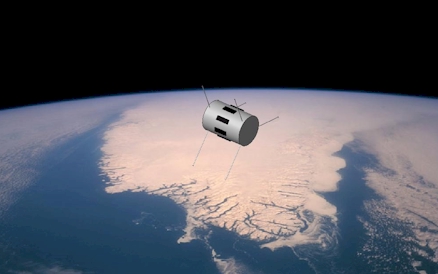InterOrbital Systems (IOS) has announced their TubeSat Personal Satellite Kit. This is 'complete', giving you the basic interface bus for your payload and including the launch costs.
If I were a salesman, I'd point out that launches alone typically cost five times that price!
The previous low-access route to space was the CubeSat, which is still an active and viable program. TubeSat just adds competition, which can only be good. IOS even mentions "the new IOS TubeSat PS Kit is the low-cost alternative to the CubeSat."
CubeSat is actually a published standard specification, not a brand. You can browse the spec yourself-- and news about projects-- at the CubeSat site at California Polytechnic. Various academia and institutions produce them, as well as contractors such as Boeing and Tethers Unltd. Citing a useful space.com CubeSat article, a typical price for construction and launch starts at $65K, but bear in mind $40K of that is just for launch.
A CubeSat is 10x10x10 cm, and like computer rack mounted gear, they can be larger in 10cm increments. A '1U' CubeSat is 10x10x10, a '2U' CubeStat is 20x10x10, and so on. Since CubeSat is just a specification, a rocket group might want a starting point to build one. One source for a kit-- sans power, communications, and the actual experiment-- has rigs for under $2K. Slap in an experiment and program it up, and you're ready to fly. Toss in some Ham radio gear, and you can even get your results.
The radio part is required for TubeSats. While some CubeSat are piggybacked onto larger missions and can either share bandwidth or be recovered, TubeSats by design are stand-alone and disposable. In a humorous turn, IOS takes what I'll call an eco-friendly approach: Since the TubeSats are placed into self-decaying orbits 310 kilometers (192 miles) above the Earth's surface, they do not contribute to any long-term build-up of orbital debris. After a few weeks of operation, they will safely re-enter the atmosphere and burn-up. TubeSats are designed to be orbit friendly.
Best of all, the price of the TubeSat kit actually includes the price of a launch into Low-Earth-Orbit on an IOS NEPTUNE 30 launch vehicle. This part is tremendously important, for reasons I'll get to. IOS reports "Launches are expected to begin in the fourth quarter of 2010." You get a launch date once you pay the full sum. At these prices, I recommend buying two!
IOS's sell sheet has this list of potential missions:
- Earth-from-space video imaging
- Earth magnetic field measurement
- Satellite orientation detection (horizon sensor, gyros, accelerometers, etc.)
- Orbital environment measurements (temperature, pressure, radiation, etc.)
- On-orbit hardware and software component testing (microprocessors, etc.)
- Tracking migratory animals from orbit
- Testing satellite stabilization methods
- Biological experiments
- On-orbit advertising
- Private e-mail

What I find exciting about the unproven TubeSats is that they are a nearly complete package that includes launch. The time savings in having to arrange launches alone means this package is open to individual citizens, who don't need to know the process of hiring a rocket. It's as close to an end-to-end solution as a lone mad scientist might want.
And, I like their launch method. Your TubeSat gets loaded into one of the 32 "Satellite Ejection Cylinders", then once in orbit, they get released. It's like a giant 32-chambered revolver in space, spitting out satellites.
I have no idea what to do with one, but I want one anyway.
Alex, the daytime astronomer
The Daytime Astronomer, Tues&Fri here, via RSS feed, and twitter @skyday





Comments